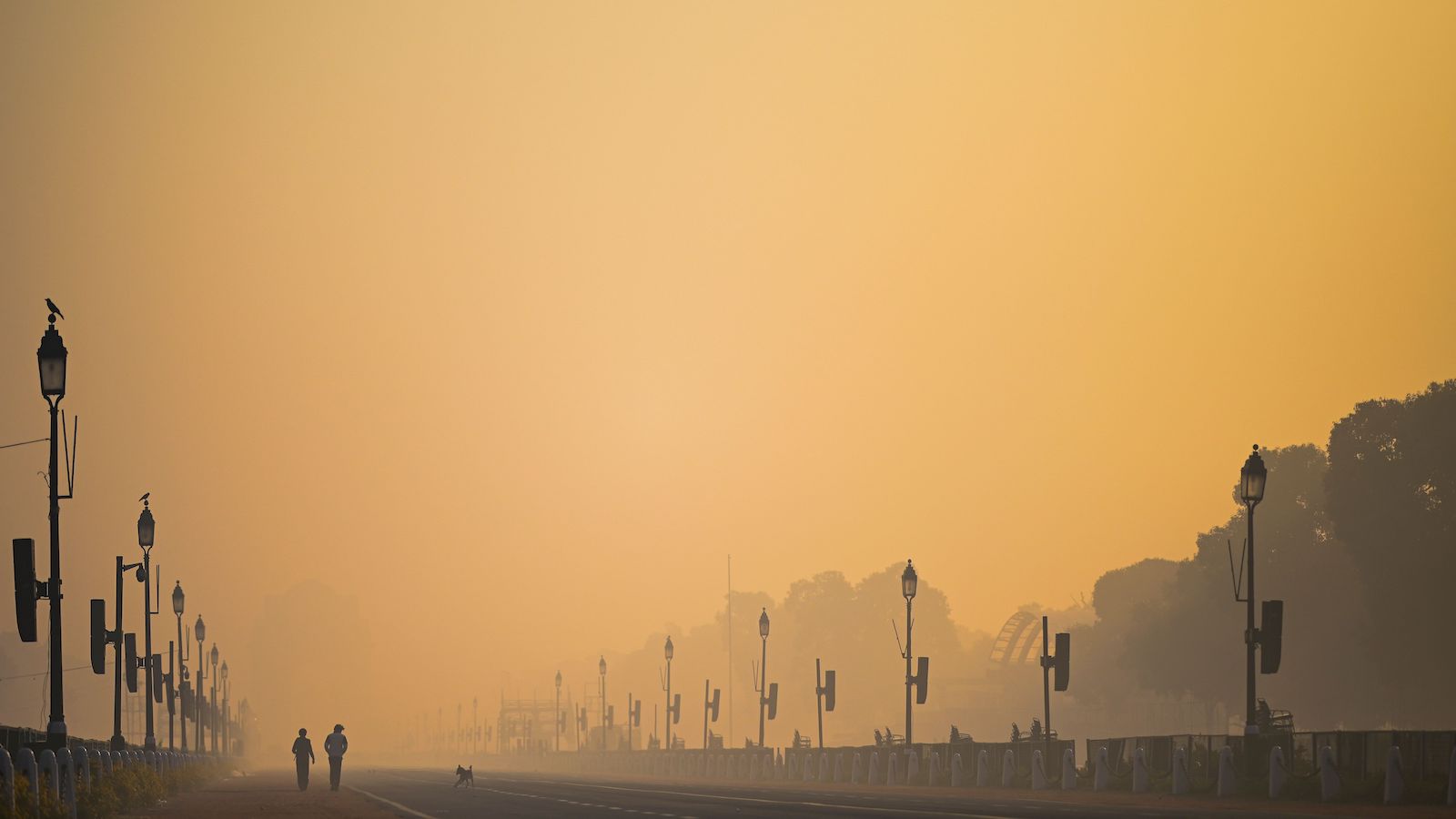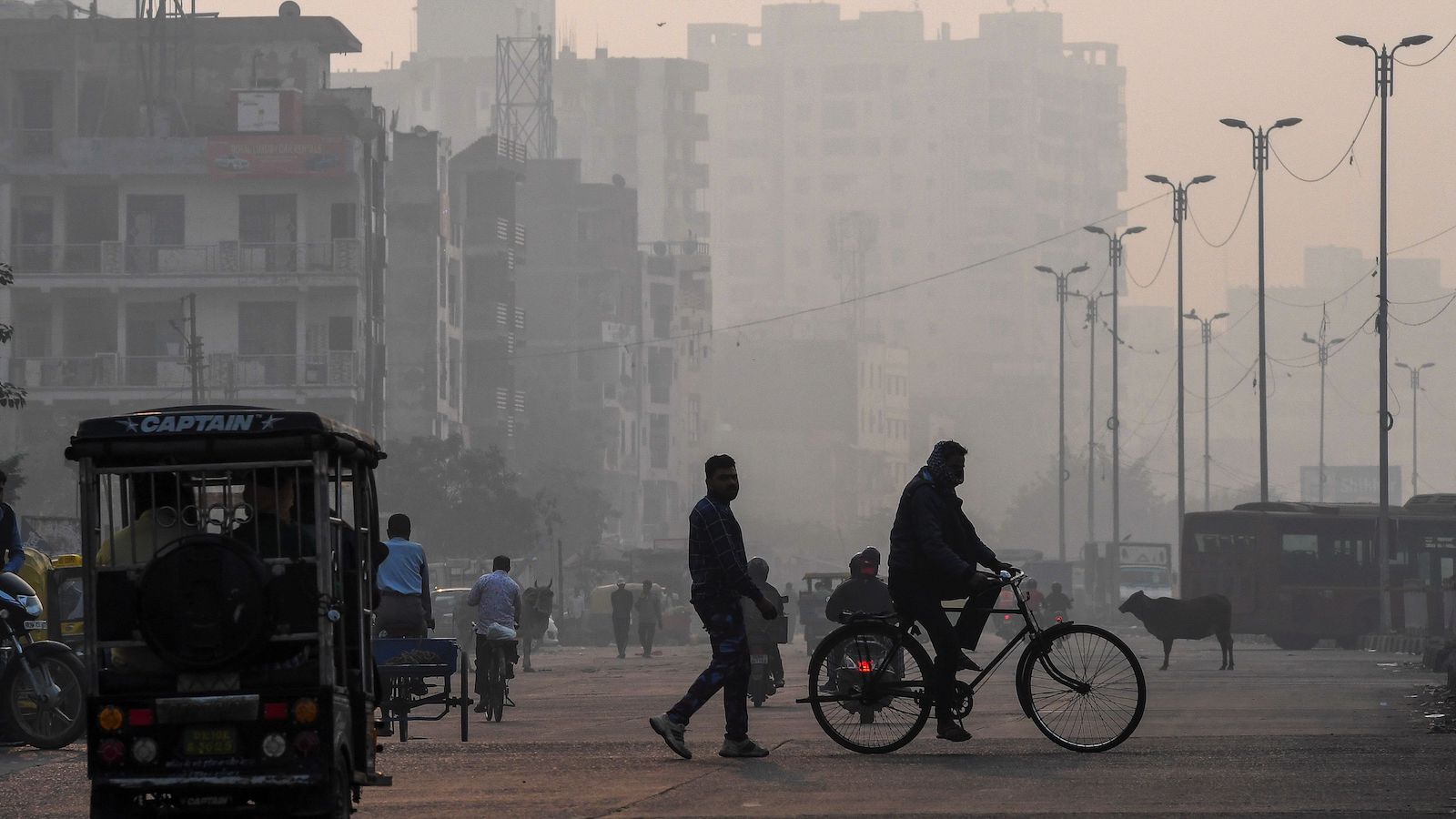Millions of people are dying each year from air pollution levels that exceed international guidelines. But even low concentrations of polluted air may pose health risks.
Three papers and reports published last week paint a grim picture of global health outcomes related to dirty air. Countries are failing to meet air pollution standards defined by the World Health Organization (or WHO), the reports show, resulting in a global loss of billions of years of life expectancy.
“Compared to global conflict, smoking, COVID-19, air pollution is by far the greatest risk to global health,” said Ken Lee, an economics researcher at the University of Chicago who coauthored one of the reports. “There’s a huge gap in awareness and concern about this issue.”
Of particular concern are small, airborne particles known as particulate matter 2.5 — or PM 2.5, named for their diameter of 2.5 micrometers, 30 times smaller than the width of a human hair. That tiny size allows the particles to lodge deep in people’s lungs and cause respiratory problems. They can also increase the risk of cardiovascular and neurological damage. And over the past year and a half, they have likely exacerbated the toll of COVID-19.
All three papers and reports highlighted the particles, which are emitted from the burning of fossil fuels and from climate change-driven wildfires, as key threats to human health. According to one of the reports, written by Lee and a colleague at the University of Chicago, the average human being is chronically exposed to more than 32 cubic micrograms of particulate pollution per cubic meter of air, more than triple the WHO’s guideline of just 10 cubic micrograms. As a result, the researchers wrote in their report, the average global citizen is losing 2.2 years of life expectancy. Added up for everyone on Earth, that amounts to 17 billion years lost annually.
The global average doesn’t reflect the high burdens of air pollution faced by many countries, especially those in the industrializing countries of South Asia. People living in India, for example, where the air in many areas is often clogged by smoke from crop burning or industrial waste, could gain nearly six years of life expectancy if WHO air pollution guidelines were met. Bangladeshis could gain 5.4 years, Nepalese could gain 5, and Singaporeans could gain almost 4.

According to the University of Chicago researchers, these countries’ high burden of air pollution is related to their relatively unregulated burning of fossil fuels. In Bangladesh, India, Nepal, and Pakistan, skyrocketing energy demands from economic development and population growth have yielded a tripling of fossil-fuel-powered electricity generation from 1998 to 2017. Meanwhile, these countries have seen three- to four-fold increases in car ownership over the past 20 years, making air pollution even worse.
Underlying this problem on a global scale is the fact that many countries have weak or lax national standards for air quality. A second report, a United Nations assessment of global air pollution legislation released on Thursday, dives deeper into governments’ failure to adequately regulate air pollution — or even agree on what it is. According to the assessment, which looked at air pollution laws in 194 countries and the European Union, 43 percent of countries don’t define the term “air pollution” in any legislation, which it says may reflect inadequate or absent regulation.
Worse is that almost a third of countries — 29 percent — don’t have any air quality standards at all. This is the case for nearly all 27 Central and West African nations, along with many Eastern European states like Azerbaijan and Georgia, and Central American countries like Honduras. Another 5 percent of countries have standards that are part of unenforceable guidelines. Even when countries do have enforceable standards, the U.N. report said, they tend to be misaligned with WHO guidelines, either because their governments are planning to tighten air quality regulations slowly over time, or because they want to “preserve highly polluting industries.” Only one-third of countries have both an overall air quality standard and a mechanism to make sure the state meets that standard.
“The air we breathe is a fundamental public good,” said Inger Andersen, executive director of the U.N. Environment Programme, in a press release. “Governments must do more to ensure it is clean and safe.”
Clearly, bringing global air quality in alignment with WHO guidelines would have a massive, positive impact on human health — particularly if countries made these standards legally binding. There would also be economic benefits, with previous research demonstrating that even small increases in air pollution are associated with reductions in economic activity, mostly from lower worker productivity and greater absenteeism. That’s not to mention health care costs for problems linked to air pollution. All told, polluted air in the world’s five most populous cities alone cost more than $85 billion in 2020, according to the Swiss air quality monitoring company IQAir.

On top of what the U.N. paper called a global picture of “heterogeneity” when it comes to air quality regulations — a hodgepodge of different standards, policy tools, and definitions — there are further questions about which air quality standards the world should be striving for. How clean is clean enough? A third paper published in the BMJ week addressed that question, complicating matters by suggesting that even the low levels of air pollution approved by the WHO could pose risks to human health.
After following more than 300,000 Europeans over a 20-year period, researchers from the University of Utrecht in the Netherlands found that chronic exposure to contaminants like PM 2.5 and nitrogen dioxide was associated with greater mortality from natural causes, heart disease, and respiratory illness — even when air pollution was well within guidelines set by the WHO and other groups.
For example, for people living in places with less than half of the WHO’s suggested nitrogen dioxide limit of 40 cubic micrograms per cubic meter, a 10-cubic-microgram increase in the pollutant was associated with an uptick in natural deaths. And in areas where the air was cleaner than the WHO’s suggested standard for PM 2.5, a 5-cubic-microgram increase in particulate matter was linked to an elevated risk of dying from respiratory disease.
According to Eloise Scotford,* an environmental law professor at University College London who helped write the U.N. report, the Dutch study is a reminder that air quality guidelines are not “pollute up to” levels. “There is no safe level of PM 2.5,” she said. Her colleagues in the U.K. have been looking at alternatives to concentration-based standards for air pollution. She cited an exposure-based approach as a promising option, where governments strive for geographically-specific limits to air pollution, taking care to protect the most sensitive populations.
The WHO is expected to announce a new slate of air quality standards sometime this year; its current guidelines are 15 years old. Scotford says the new guidelines could be more ambitious, but the scale of change that is required to protect populations from bad air is significant. “You’re talking about a transition in how societies and economies work,” she said, noting that much of the world’s burden of air pollution comes from fossil fuel use. “It will require large-scale investment and thinking differently about how we do business and move people around. It’s a big transition.”
*Correction: This story originally misidentified Eloise Scotford.




